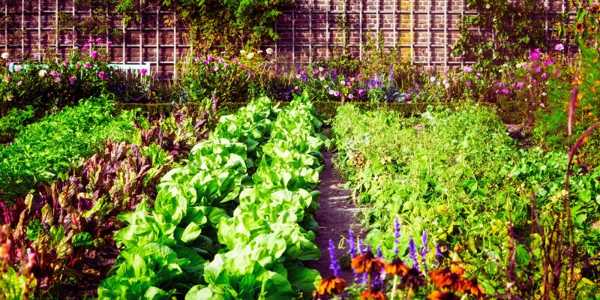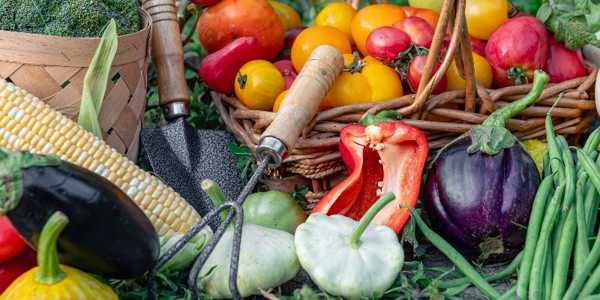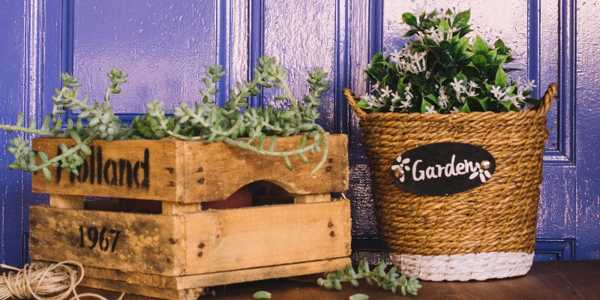How to Make Money with a Garden: Turn Your Green Thumb into Cash!
Imagine stepping into your garden, harvesting fresh vegetables for dinner and extra cash! How to Make Money with a Garden isn't just a dream; it's a viable business opportunity. With local demand for fresh, organic produce skyrocketing, there's never been a better time to explore ways to turn your gardening passion into profit. From selling veggies at farmers' markets to creating value-added products, we'll uncover practical strategies to cultivate your green thumb into a successful home gardening business.

How to Profit from Gardening/Unlock the Profits of Gardening?
Gardening isn’t just about fresh veggies; it can also earn us cash. During the pandemic, many turned their backyards into mini-businesses. It’s amazing to think we can grow food and make money!
Here are a few reasons why gardening can be profitable:
Fresh Produce: People love fresh fruits and veggies that they can’t always find in stores.
Local Demand: There's often a strong market for locally grown produce.
Community Connection: Selling to neighbors can build community ties.
Value-Added Products: You can turn excess produce into jams, pickles, or sauces.
Gardening showed us it’s more than just growing produce; it’s also about sharing tips. We can offer lessons to boost our income from selling veggies.
Choose the Right Method for Profit
Maximizing profit starts with picking the right gardening method. Here are some tips that helped us:
Know Your Market: Check what veggies or herbs people want in your area. This can save you time and resources.
Raised Beds Work Wonders: They yield more in less space and are easier to tend. Using raised garden beds can alleviate backaches from bending over while gardening!
Consider Organic: People pay more for organic produce, so it’s worth exploring. Just be sure to know the organic standards!
Try Vertical Gardening: If space is tight, vertical gardens can help you grow more with less room. Plus, they can look pretty cool!
Gardening has its challenges, but each success feels rewarding. Harvesting the first crop and sharing it can be incredibly fulfilling. Let’s explore how gardening can be both satisfying and profitable!
Grow High-Demand Crops
Identify High-Demand Crops for Small Scale Farming and Local Markets
Choosing what to grow can be challenging, but some crops consistently meet market demand. Here are some fruits, herbs, and vegetables that typically perform well:
Heirloom Tomatoes: These are flavorful and popular with foodies.
Microgreens: Little greens that are trendy in restaurants and quick to grow.
Lavender: Great for essential oils, it's low-maintenance and in high demand.
Garlic: A kitchen staple that’s easy to grow and store.
Gourmet Mushrooms: Chefs love them, and we can grow them indoors.
Specialty Herbs: Basil, cilantro, and mint have strong culinary appeal.
Goji Berries: Packed with nutrients, they’re becoming increasingly popular.
Starting with a mix of these crops can set us up for success. It’s all about tapping into what our local market craves!
Seasonal Considerations for Maximizing Yield
Timing can make or break our harvest. Each crop has its sweet spot for planting to maximize yield and profit. Here are some tips we’ve picked up along the way:
Spring Planting: Start tomatoes and peppers after the last frost, as they thrive in warmer weather
Fall Harvest: Planting garlic in the fall lets us enjoy a spring harvest. It’s almost magical watching it grow!
Succession Planting: You can plant microgreens every couple of weeks for a quick turnaround, ensuring a steady supply and consistent yield.
Cool-Season Crops: Spinach and kale can be planted in late summer or early spring for a fall harvest.
Keep an eye on the weather! If a late frost hits, cover your crops with row covers. You can adapt quickly and enjoy the rewards of a bountiful harvest!
Diversify your Offerings
Add Value to Your Crops
Maximizing garden harvests takes creativity. You can preserve tomatoes for winter, dry apples into snacks, or make fruit leather—just blend, spread, and dry for a fun, tasty project!
Here are more ideas for adding value to our crops:
Herb Blends: With all that extra basil and oregano, we can create unique mixes to sell. It’s a little effort for a lot of flavor!
Speciality Jams: You can experiment with seasonal fruits and unique flavour combinations. These make for great gifts or special treats.
Pickles: Cucumber season is perfect for creating crunchy pickles. Add some garlic or dill for extra flavour.

Sell Garden-Related Products
Consider selling seeds or starter plants straight from the garden. Heirloom seeds are popular, and you can package them nicely for extra charm.
Gardening kits are another great idea. Consider these options:
Salsa Garden Kit: Include everything someone needs to grow tomatoes, cilantro, and peppers. It’s easy to assemble and may fly off the shelves!
Herb Garden Kit: Package pots, soil, and a variety of herbs, perfect for those with limited space.
Diversifying offerings isn't just about sharing our love for gardening; it can also boost income. You can do this!
Marketing and Sustainable Practices for Your Garden Products
Build a Recognizable Brand
Starting, figuring out a brand can feel like navigating a maze. You can sharpen your message by focusing on sustainability.
Know Your Values: People connect with genuine stories. It’s like a breath of fresh air in the market.
Simple Design is Key: An earthy logo? Yes, please! It’s eye-catching and fits the vibe.
Share Your Story: Letting folks in on your journey builds trust and community.
When we connect authentically, we see loyalty grow among customers who share our values.
Navigate Selling Options
Selling options can be overwhelming, but farmers' markets became our go-to. Nothing beats chatting with customers and getting real feedback!
Farmers' Markets: It’s a great way to meet people and gauge reactions.
Online Marketplaces: Think Etsy; it expands your reach.
Social Media: Engaging posts on Instagram? They create a buzz.
Adapting the approach to each platform is essential.
Organic Gardening Demand and Certification
Organic gardening is gaining popularity! Most consumers would pay about five per cent more for organic foods, while only 14 per cent would spend over ten per cent extra. This shows a cautious interest in organic options, and tackling certification can feel daunting initially.
Research Certification: Check into local certifying bodies; it’s worth it.
Document Everything: Keeping detailed records of your practices is a must.
Promote your Certification: Highlight it everywhere; it attracts quality-focused customers.
Blend marketing with sustainability, and you can carve a unique market space. It takes patience, but that’s the beauty. If you're diving into garden products, keep these tips close—we’re in this together!
Sowing Seeds of Success: Your Path to Profitable Gardening!
Turning your garden into a profitable venture is not only achievable but also rewarding! By understanding local demand, selecting high-demand crops, and adding value through creative products, you can effectively explore how to make money with a garden. Moreover, prioritizing sustainable practices while connecting with your community will enhance your success.







